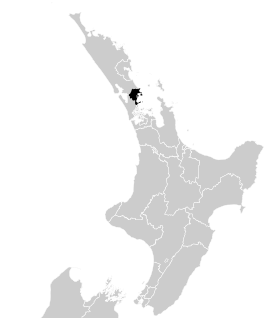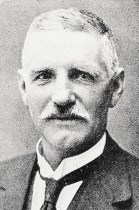Related Research Articles

The 1978 New Zealand general election was a nationwide vote to elect the 39th New Zealand Parliament. It saw the governing National Party, led by Robert Muldoon, retain office, but the opposition Labour Party won the largest share of the vote. Reorganisation of the enrolment system caused major problems with the electoral rolls, which left a legacy of unreliable information about voting levels in this election.

The 1969 New Zealand general election was a nationwide vote to determine the shape of Parliament's 36th term. It saw the Second National Government headed by Prime Minister Keith Holyoake of the National Party win a fourth consecutive term.

Brian John Donnelly was a New Zealand politician. He was a member of the New Zealand First party.
Doug Woolerton is a New Zealand politician who has been a member of the New Zealand First party since it was founded, and the National Party for a few years before that.
Brian Kevin Neeson is a New Zealand politician. He was an MP from 1990 to 2002, representing the National Party, and a member of the Waitematā District Health Board from 2004 to 2010.

The 1954 New Zealand general election was a nationwide vote to determine the shape of the New Zealand Parliament's 31st term. It saw the governing National Party remain in office, but with a slightly reduced majority. It also saw the debut of the new Social Credit Party, which won more than eleven percent of the vote but failed to win a seat.

The 48th New Zealand Parliament was a term of the Parliament of New Zealand. Its composition was determined at a general election held on 17 September 2005. The new parliament met for the first time on 7 November 2005. It was dissolved on 3 October 2008.

Helensville was a New Zealand parliamentary electorate in the Auckland region, returning one Member of Parliament to the House of Representatives. The electorate was first established for the 1978 election, was abolished in 1984, and then reinstate for the 2002 election. The seat was won and held by John Key through his term as prime minister. Chris Penk of the National Party held the seat from the 2017 general election until its abolition in 2020, when it was replaced with the new Kaipara ki Mahurangi electorate.

Mount Albert is a parliamentary electorate based around the suburb of Mount Albert in Auckland, New Zealand, returning one member of Parliament (MP) to the House of Representatives. It has elected only Labour Party MPs since it was first contested at the 1946 election. The incumbent MP is Jacinda Ardern, currently serving as Prime Minister of New Zealand, who was first elected in a 2017 by-election. The electorate was previously represented by David Shearer from 13 June 2009 to 31 December 2016; it was represented by Helen Clark from the 1981 general election until her resignation from Parliament on 17 April 2009.
New Lynn is a New Zealand parliamentary electorate, returning one member to the New Zealand House of Representatives. Deborah Russell of the Labour Party has represented the electorate since the 2017 general election.

Rodney was a New Zealand parliamentary electorate, returning one Member of Parliament to the House of Representatives. The last MP for Rodney was Mark Mitchell of the National Party. He held this position from 2011 until the electorate was replaced with Whangaparāoa in 2020. Mitchell stood for and won that seat.

Te Atatū is a parliamentary electorate, returning one Member of Parliament to the New Zealand House of Representatives. The current MP for Te Atatū is Phil Twyford of the Labour Party.

Waitakere was a parliamentary electorate, returning one Member of Parliament to the New Zealand House of Representatives. The electorate was first formed for the 1946 election and existed until 2014, with breaks from 1969 to 1978 and from 1987 to 1993. The last MP for Waitakere was Paula Bennett of the National Party, who had held this position since the 2008 election.

Edward Kellett was a New Zealand Independent Labour Member of Parliament for a Dunedin electorate.
Waitemata was a New Zealand parliamentary electorate, from 1871 to 1946, and then from 1954 to 1978. It was represented by 18 members of parliament.

William Phillips Endean was a New Zealand politician, first of the Reform Party then from 1935 the National Party. He failed to be selected for the 1943 election and was the first sitting National MP with that fate, but was called to the Legislative Council in 1950 as part of the Suicide squad. He was a lawyer by trade.

The 29th New Zealand Parliament was a term of the Parliament of New Zealand. It opened in 1950, following the 1949 general election. It was dissolved in 1951 in preparation for the 1951 general election. The governing Labour Party had been defeated in the election by the National Party. This marked the end of the First Labour government and the beginning of the First National government.

The 20th New Zealand Parliament was a term of the New Zealand Parliament. It was elected at the 1919 general election in December of that year.

The 31st New Zealand Parliament was a term of the New Zealand Parliament. It was elected at the 1954 general election on 13 November of that year.

Christopher Aidan Penk is a New Zealand politician and Member of Parliament in the House of Representatives for the National Party.
References
- 1 2 3 4 Gustafson 1986, p. 323.
- ↑ Wilson 1985, p. 208.
- ↑ Wilson 1985, pp. 194, 208.
- ↑ Wilson 1985, p. 280.
- ↑ Wilson 1985, p. 253.
- ↑ "Beaten, bloodied and bruised: The MPs attacked over the years". The New Zealand Herald . 14 March 2019. Retrieved 14 March 2019.
- ↑ (broken link to Stuff)
- ↑ Thomson, George; Nick Wilson; Philippa Howden-Chapman (6 December 2007). "The use and misuse of health research by parliamentary politicians during the development of a national smokefree law". Australia and New Zealand Health Policy. Retrieved 12 August 2012.
- ↑ "New List MP For New Zealand First Party". Scoop.co.nz. 15 February 2008. Retrieved 15 February 2008.
- ↑ Eden, Sue (4 April 2008). "No plot to play race card says NZ First". The New Zealand Herald . Retrieved 26 September 2011.
- ↑ "New Year honours list 2006". Department of the Prime Minister and Cabinet. 31 December 2005. Retrieved 9 June 2019.
Works cited
- Gustafson, Barry (1986). The First 50 Years : A History of the New Zealand National Party. Auckland: Reed Methuen. ISBN 0-474-00177-6.
- Wilson, James Oakley (1985) [First ed. published 1913]. New Zealand Parliamentary Record, 1840–1984 (4th ed.). Wellington: V.R. Ward, Govt. Printer. OCLC 154283103.